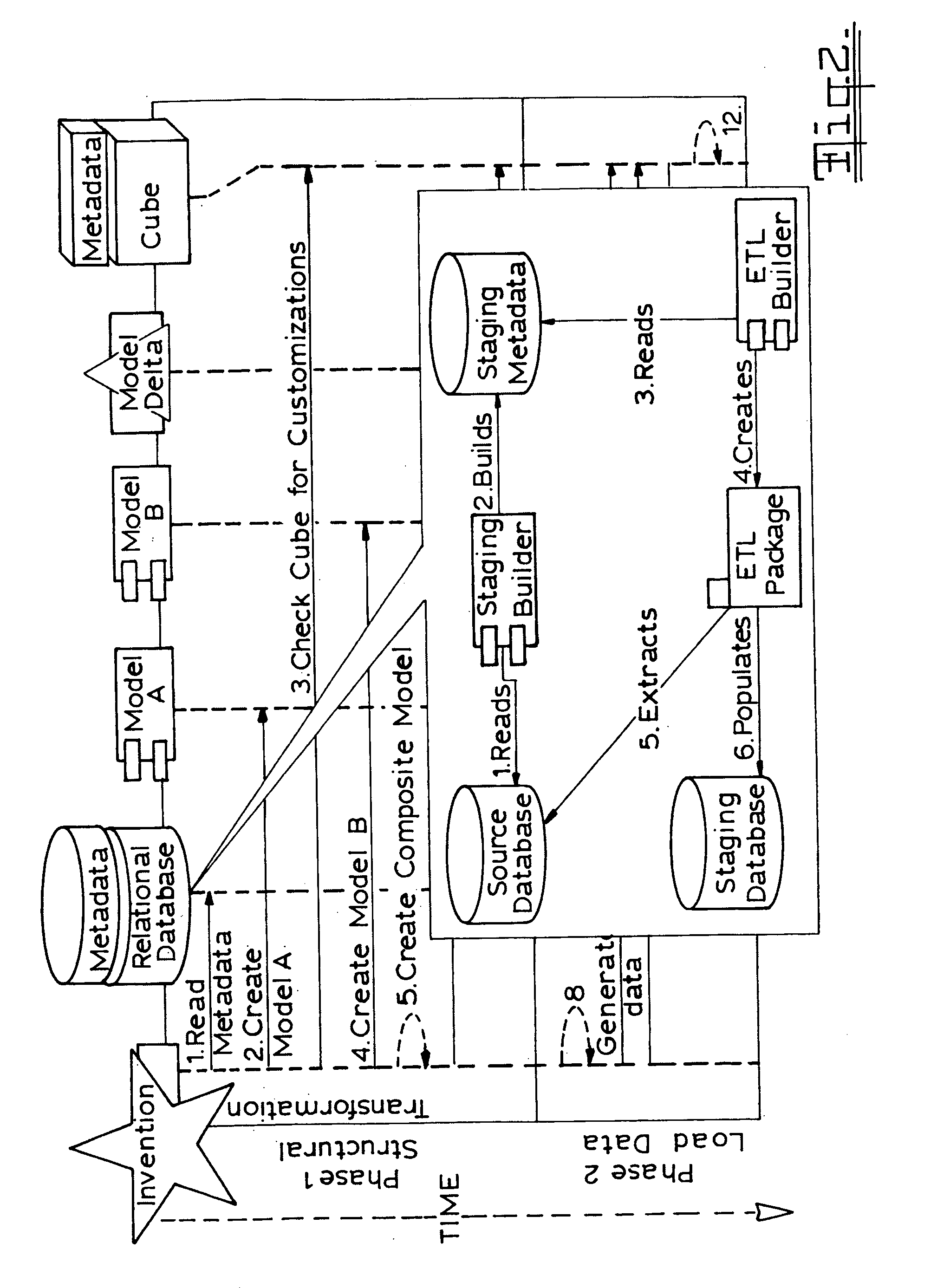Creation of a data store
a data store and data technology, applied in the field of data store creation, can solve the problems of reducing the value of data, and reducing the cost of data storage,
- Summary
- Abstract
- Description
- Claims
- Application Information
AI Technical Summary
Benefits of technology
Problems solved by technology
Method used
Image
Examples
example
[0089]Consider the following tables:
[0090]A user wishes to report on sales value, cost of sale and margin, and this is normally done by summarizing the items on the Sales Line table. In this case however, the user also wants to view the same values by Sales Person.
[0091]Ordinarily, to do this in the cube it would mean that we have to include the Sales Header table, which is really only needed for its Customer Number and Sales Person Number fields.
Solution
[0092]There are 3 ways of handling this[0093]1. Modify the query in the cube to include all three tables[0094]2. Merge the fields of the three tables into a single table.[0095]3. Add the items as dimensions and measure groups
[0096]Option 1 represents the status quo and leads to a complex cube with poor performance. Option 3 leads to an unnecessarily complex cube with referential dimensions.
[0097]The best solution is Option 2 and results in the following table which retains all information but allows for faster, simpler queries.
Sales...
example 1
[0108]Consider a table with 61 rows containing a “Delivery Method Code” column.
Delivery Method CodeRow Count613AUPOST1DHL4FEDEX2
[0109]Computing summary statistics for this table results in the following:
VariableCalculationResultDistinct value count 3Empty Data61Total row count68Coverage=7 / 68 *10010.29%Discrimination=3 / 7 *10042.86%
[0110]This column is too sparsely populated as indicated by the coverage metric. This column would be ignored.
example 2
[0111]Consider a table with 27 rows containing a “Discount Code” column.
Discount CodeRow Count27LARGE ACC20RETAIL21
[0112]Computing summary statistics for this table results in the following:
VariableCalculationResultDistinct value count 2Empty Data27Total row count68Coverage=41 / 68 *10060.29%Discrimination=2 / 41*100 4.88%
[0113]This column has sufficient coverage and a low discrimination factor so it would be included as an attribute hierarchy.
PUM
 Login to View More
Login to View More Abstract
Description
Claims
Application Information
 Login to View More
Login to View More - R&D
- Intellectual Property
- Life Sciences
- Materials
- Tech Scout
- Unparalleled Data Quality
- Higher Quality Content
- 60% Fewer Hallucinations
Browse by: Latest US Patents, China's latest patents, Technical Efficacy Thesaurus, Application Domain, Technology Topic, Popular Technical Reports.
© 2025 PatSnap. All rights reserved.Legal|Privacy policy|Modern Slavery Act Transparency Statement|Sitemap|About US| Contact US: help@patsnap.com



